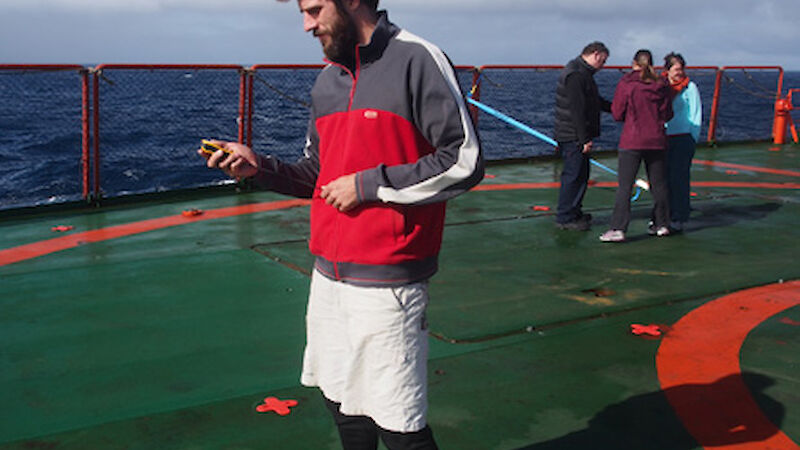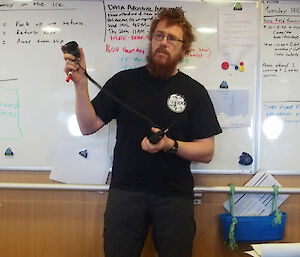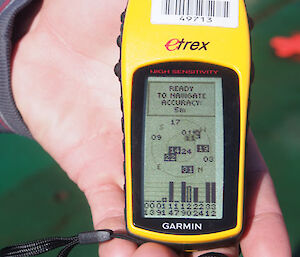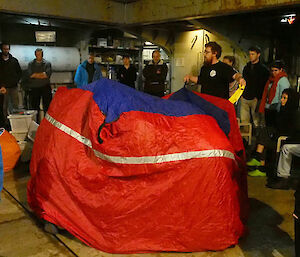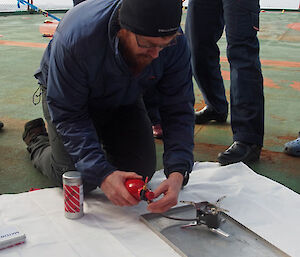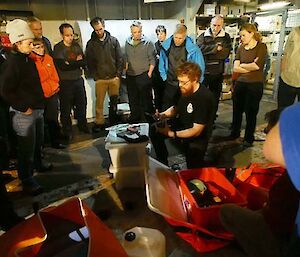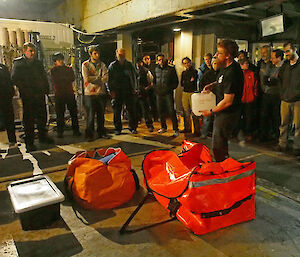Wednesday 19 September
Lighting a camp stove, layering clothing and counting the blasts of the ship’s horn were key safety skills learnt in our Antarctic field training today. The session aboard the ship, as it continues to sail south, gave us a broad overview of the sorts of hazards we might face and how to respond to them. Our Field Training Officer, Christian Gallagher, has many years of experience working in Antarctica and in outdoor pursuits and education in Australia.
Our first lesson was to understand the three signals we might receive from the ship when we’re out on an ice floe. One long blast of the horn means we need to return to the ship immediately, three blasts means we should pack up and return to the ship in a hasty fashion and five blasts means we need to move away from the ship. The latter could occur if there’s an incident on the ship, or if the ice floe and the ship part company and the ship has to manoeuvre to reach us.
If we do lose sight of the ship or become stranded on a break-away ice floe we will have a compass, GPS and VHF radio to communicate with the ship. We took some time to practice using all three pieces of equipment. Being ignorant in the use of radios, I was interested to learn that sea ice can block the VHF signal due to its saltiness and rafting or ridging — where the sea ice builds up and blocks the line of sight between two people trying to communicate. To overcome this problem the ship has a repeater station which relays the signal back down to the recipient.
Once we’d practiced giving and receiving radio calls, we talked about how to dress to cope with the biting cold we will soon be experiencing. The first layer of cold weather defence is our food and hydration levels. Next we have our thermal clothing layer, an insulating fleece and finally an outer windproof layer. These layers give us options to rug up or peel off clothing, depending on the weather conditions.
When out on the ice each team will have a sled for scientific equipment, but also a survival cache in case we have an unexpected sleep-over on the ice. Chris took us to the ‘tween deck’ (the cargo hold at the front of the ship) to check one out. Each cache contains food, water, cooking equipment and shelter for up to 10 people. This includes insulating mats, sleeping bags and a large bivvy that simply drapes over the group like a fitted sheet, to keep out the wind. It was certainly a cosy fit!
Hot food is good for morale, as well as warming you up, so we took a close look at how to light the stoves included in each cache. A few of us had a go at lighting the MSR (Mountain Safety Research) XGK stoves, which can be used with different fuels — diesel, Shellite, kerosene, methanol — depending on what’s available. The trick with these stoves is to make sure the vapour tube is sufficiently pre-warmed (with some ‘fire paste’) before you turn on the fuel, to prevent a sudden flash of yellow flames singeing your eyebrows or burning down your shelter. With our fire blankets and a crew member standing by with a fire extinguisher, a few of us took a turn lighting the stove. The fact that I’m writing this now is testament to our success.
Coming up, I meet some early career polar scientists.

